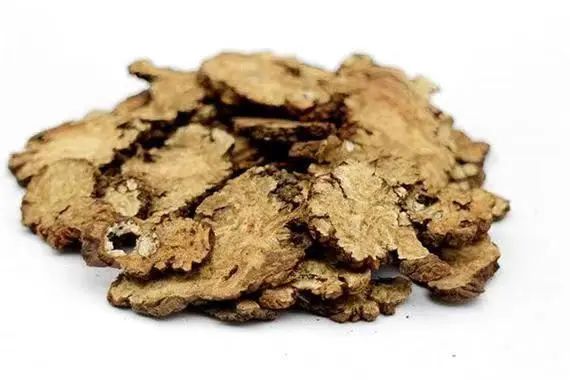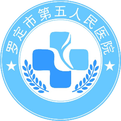Chuanxiong is also known as: Shanjuqiong, Xiongfu, Xiangguo, Huju
Functions: Invigorates blood and promotes qi circulation, dispels wind and alleviates pain
Introduction
A common Chinese medicinal herb, it can be used in formulas, proprietary Chinese medicines, and health foods.
It has the functions of invigorating blood and promoting qi circulation, dispelling wind, and alleviating pain.
Contraindications for pregnant women; caution in cases of yin deficiency with excess heat, yin deficiency with yang hyperactivity, qi deficiency, excessive sweating, heavy menstrual bleeding, and bleeding disorders.
 Introduction to Chinese Medicine
Introduction to Chinese Medicine
Chuanxiong (Ligusticum chuanxiong Hort.) is derived from the dried rhizome of the plant in the Umbelliferae family. According to the Compendium of Materia Medica, the head, sky, and high places symbolize heaven, which is also referred to as the vault of heaven. This herb is spicy and warm, ascending to the head, hence it is called Xiongfu, and because it is produced in Sichuan, it is named Chuanxiong.
It is commonly made into various proprietary Chinese medicines for treating chest tightness, severe chest pain radiating to the back, difficulty in breathing while lying down, stabbing pain in the chest and ribs under the armpits, and swelling and pain from falls.[1-2].
Main Properties
Taste: Spicy; Nature: Warm. Channels: Liver, Gallbladder, Pericardium[2].
Harvest in summer when the nodes on the stem are prominently protruding and slightly purple. Remove dirt, dry in the sun, and then bake, removing the fibrous roots. Cut into thick slices.
Chuanxiong is irregularly thick slices. The outer skin is gray-brown or brown, with wrinkled lines.
The cross-section is yellow-white or gray-yellow, with distinct wavy rings or polygonal textures, scattered with yellow-brown oil spots.
It is solid, with a strong aroma, and has a bitter, spicy, and slightly sweet taste.
Ancient Texts
Shennong’s Classic of Materia Medica: “It is the main treatment for wind stroke entering the brain, headaches, cold bi syndrome, muscle spasms, traumatic injuries, and women’s blood stagnation leading to infertility.“
Record of Famous Physicians: “It eliminates cold movement in the brain, alleviates facial wind, reduces tears, excessive salivation, and sudden dizziness, and treats various cold conditions, abdominal pain, and rib pain.“
Compendium of Materia Medica: “Chuanxiong is a blood and qi herb; it alleviates liver stagnation with its spiciness, thus suitable for those with blood deficiency; it disperses stagnation, hence suitable for those with qi stagnation.[3]”
Treatment Efficacy: Invigorates blood and promotes qi circulation, dispels wind and alleviates pain[2].
Main Indications
Chest obstruction and heart pain, stabbing pain in the chest and ribs, swelling and pain from falls, irregular menstruation, dysmenorrhea, abdominal pain from masses, headaches, and rheumatic pain[2].
Invigorating Blood and Promoting Qi
Chuanxiong can invigorate blood, dispel stasis, and open the meridians, effectively treating heart vessel obstruction (where blood stasis blocks the heart vessels), chest tightness, and severe chest pain radiating to the back, as well as difficulty in breathing while lying down.
Chuanxiong also promotes qi and alleviates pain, useful for treating stabbing pain in the chest and ribs caused by liver qi stagnation.
Chuanxiong can also invigorate blood, disperse stasis, reduce swelling, and alleviate pain, commonly used for treating traumatic injuries and pain from stasis.
Chuanxiong is particularly effective in regulating menstruation, especially for treating irregular menstruation, dysmenorrhea, and amenorrhea.
Chuanxiong also has the effect of invigorating blood, dispelling stasis, and resolving masses, useful for treating abdominal pain from masses (characterized by abdominal lumps accompanied by pain).
Dispelling Wind and Alleviating Pain
Chuanxiong has the ability to dispel wind and alleviate pain, excelling in treating headaches caused by wind, cold, dampness, heat, stasis, or deficiency, which can be selected based on the syndrome.
Chuanxiong disperses wind and invigorates blood, effectively circulating through the body’s small collaterals, and can also be used to treat rheumatic pain and joint pain.[3,5-6].
Clinical Applications
Blood Stasis and Qi Stagnation Pain
For treating chest tightness due to heart vessel obstruction (where blood stasis blocks the heart vessels), severe chest pain radiating to the back, and difficulty in breathing while lying down, it is often used with Sanqi (Panax notoginseng) and Honghua (Carthamus tinctorius).
For treating liver qi stagnation and rib pain, it is often used with Chaihu (Bupleurum), Baishao (Paeonia lactiflora), and Xiangfu (Cyperus rotundus).
For treating blood stasis amenorrhea (amenorrhea due to blood stasis) and dysmenorrhea, it is often used with Taoren (Prunus persica), Honghua, and Danggui (Angelica sinensis).
For treating postpartum lochia retention and abdominal pain from stasis, it can be combined with Taoren, Danggui, and Paojiang (dried ginger).
For treating traumatic injuries and pain from stasis, it can be combined with Ruxiang (Boswellia) and Moyi (Commiphora) and Sanqi.
Headaches and Rheumatic Pain
For treating wind-cold headaches, often characterized by severe headache with cold intolerance, nasal congestion, and runny nose, it is commonly used with Baizhi (Angelica dahurica), Xixin (Asarum), and Jingjie (Schizonepeta).
For treating wind-rheumatic headaches, often characterized by headache with body heaviness and fatigue, it is commonly used with Qianghuo (Notopterygium), Fangfeng (Saposhnikovia), and Gaoben (Ligusticum sinense).
For treating wind-heat headaches, often characterized by headache with fever, nasal congestion, yellow phlegm, and red eyes, it is commonly used with Juhua (Chrysanthemum), Shigao (Gypsum), and Jiangcan (Bombyx mori).
For treating blood stasis headaches, often characterized by sharp pain, dizziness, and a purple tongue, it is commonly used with Tianma (Gastrodia elata).
For treating blood deficiency headaches, often characterized by dull pain, pale complexion, and pale lips, it can be combined with Danggui, Shudihuang (Rehmannia glutinosa), and Baishao.
For treating rheumatic pain, often characterized by joint pain, body heaviness, and sticky stools, it is commonly used with Duhuo (Angelica duhuo), Qinjiao (Gentiana macrophylla), and Fangfeng.[5].
Modern Research:Studies have found that Chuanxiong has pharmacological effects such as improving blood rheology, vasodilation, and anti-myocardial ischemia and anti-cerebral ischemia.[3].
Usage:The dosage of Chinese herbs is fundamental to their properties and efficacy. Different dosages not only affect efficacy but also toxicity.
Chinese medicinal materials must be processed before being used in formulas and preparations; different processing methods can lead to variations in efficacy.
Chuanxiong can be used alone or in combination with other Chinese herbs, or applied in formulas, proprietary medicines, and medicinal meals. Below are examples of some common usages.
Dosage: When decocting Chuanxiong for internal use, the usual dosage for adults is 3~10 grams per day, or it can be used in pills or powders.
For external use, apply an appropriate amount, ground into powder and sprinkled on the affected area.
Except for digestive herbs (which should be taken promptly after meals) and sedative herbs (which should be taken before sleep), generally, medications should be taken about 1 hour apart from meals to avoid affecting the efficacy and digestion of food.
For treating cold-damp blood stasis conditions (which may present with cold intolerance and localized stabbing pain), it is suitable to use with wine processing.[2,5,7-10].
【Note: The combinations, formulas, and medicinal meals mentioned in this article must be referenced and applied under the guidance of a qualified TCM practitioner. Do not attempt blindly! This article is for professional TCM practitioners’ reference and learning only and should not be used as a prescription. The platform does not bear any responsibility for any consequences arising from this!】
【Disclaimer: The materials and images used in this article are sourced from the internet and literature for the purpose of medical knowledge dissemination. If there is any infringement, please contact for removal!】
Submitted by: Rehabilitation Medicine Center
Edited by: Party Office

